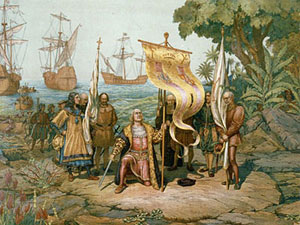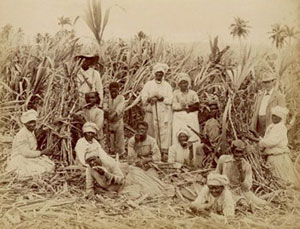Rum is the distillate of sugar cane molasses; its history is the history of sugar

Rum is the distillate of sugar cane molasses; its history is the history of sugar. In 1493 Christopher Columbus collected sugar cane seedlings in the Canaries during his second trip to America, and transplanted them to the Caribbean islands. The Caribbean proved to be the ideal environment for the development of this crop, which spread throughout the area by virtue of the insatiable demand for sugar from European countries, which spurred the development of plantations. In the 1600s, the phenomenon called the “Triangle of Mercantilism” developed, a brutal commercial triangle, where people sailed from Europe to Central Africa to embark on slaves to take to Caribbean plantations; here the sugar produced was loaded onto ships and placed on European markets. In the sugar factories the reeds were ground, the juice collected which, once boiled, formed pieces of crystallized sugar. The remaining non-solidified juice took the name of “molasses”, whose composition at 50% is sugar; from the fermentation comes the first sugar cane alcohol, used to endure the inhuman fatigue of life on the plantations. It will also become the main element for the ceremonies of the Santeria, a religion created to celebrate the African animist gods in the shadow of Catholic saints. With the discovery and conquest of America in 1492, the Middle Ages ended and the modern era began.
Rum as the “petrol” of history

The use of molasses in fermentation and distillation has been documented since the early 1600s; the explosion of rum was immediate, and the so-called “devil’s drink” became the drink most consumed by pirates and privateers who infested the Caribbean and the coasts of America. In 1655 the British fleet replaced the daily ration of French brandy with rum. In 1740 to contain the effects of rum on sailors, Admiral Vernon invented the first cocktail, the “Grog”, mixing a pint of rum with three pints of water; later lemon was added to combat scurvy. The body of Horatio Nelson, killed in the Battle of Trafalgar, was kept in a rum barrel to be transported to England. In 1789 George Washington gave his first speech as President of the United States, standing on a barrel of rum. For a certain period, rum became common currency in Europe like gold. Estimates of rum consumption in the American colonies before the war of independence established a per capita consumption for each person of 13.5 liters per year. Until the mid-1800s, rums were strong, dark and impure distillates. The Royal Spanish Development Commission issued a tender to finance anyone who managed to improve the quality of the product. The most important personality in this process was Don Facundo Bacardi, who inaugurated new distillation techniques, filtering with vegetable carbon, differentiated cultivation of specific yeasts and aging in oak barrels. With funding from the Spanish Royal House, Don Facundo founded the Distillery in Santiago de Cuba in 1862.
Ron Varadero: the noble “son” of Don Facundo Bacardi

The “Traditional Rum” is born in Santiago de Cuba, also called “Industrial” because it comes from the molasses resulting from the processing of sugar cane. Called “Ron Ligero” because it is clean and dry, with subtle and very pleasant aromas on the palate. For the first time in the history of Rum, aging batteries of 5, 10 and 15 years are created, the aging of Rum is born in this Distillery. This is the product that in a century and a half of history has conquered the world, making Santiago de Cuba famous for this, known as the Cuna del Ron Ligero, the Cradle of Rum. In 1959, the Bacardi heirs, who had previously registered the trademark in the Bahamas islands, abandoned Cuba. However, the workers continued to work in the distillery, passing on to subsequent generations their experience and knowledge, heritage of the current Cuban Ronero Masters who continue to guarantee the highest quality of the famous Ron Cubano. Ron Varadero was born as a brand to be produced in the old Distillery of Santiago de Cuba which is referred to in the frieze of the “red sun”.

